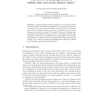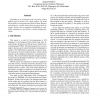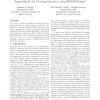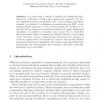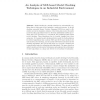CAV
2004
Springer
15 years 1 months ago
2004
Springer
Model checking algorithms can report a property as being true for reasons that may be considered vacuous. Current algorithms for detecting vacuity require either checking a quadrat...
FORMATS
2007
Springer
15 years 1 months ago
2007
Springer
Jackson queueing networks (JQNs) are a very general class of queueing networks that find their application in a variety of settings. The state space of the continuous-time Markov c...
CAV
1998
Springer
15 years 2 months ago
1998
Springer
It has become good practice to expect authors of new model checking algorithms to provide not only rigorous evidence of the algorithms correctness, but also evidence of their pract...
RTCSA
1999
IEEE
15 years 2 months ago
1999
IEEE
Scheduling in an environment with constraints of many different types is known to be a hard problem. We tackle this problem for an integrated steel plant in Ghent, Belgium, using ...
TPHOL
2003
IEEE
15 years 3 months ago
2003
IEEE
Abstract. Model checking and theorem proving are two complementary approaches to formal verification. In this paper we show how binary decision diagram (BDD) based symbolic model ...
FORMATS
2004
Springer
15 years 3 months ago
2004
Springer
Abstract. We describe OBDD-based symbolic model checking algorithms for simply-timed systems, i.e. finite state graphs where transitions carry a duration. These durations can be a...
ECLIPSE
2004
ACM
15 years 3 months ago
2004
ACM
This paper describes our effort on developing educational materials on model checking to help foster the adoption of software model checking. We describe the course materials tha...
SPIN
2005
Springer
15 years 3 months ago
2005
Springer
Embedded software verification is an important verification problem that requires the ability to reason about the timed semantics of concurrent behaviors at a low level of atomic...
FMCO
2005
Springer
15 years 3 months ago
2005
Springer
Abstract. In recent years a bundle of parallel and distributed algorithms for verification of finite state systems has appeared. We survey distributed-memory enumerative LTL mode...
135
click to vote
CHARME
2005
Springer
15 years 3 months ago
2005
Springer
Abstract. Model checking is a formal technique for automatically verifying that a finite-state model satisfies a temporal property. In model checking, generally Binary Decision D...

